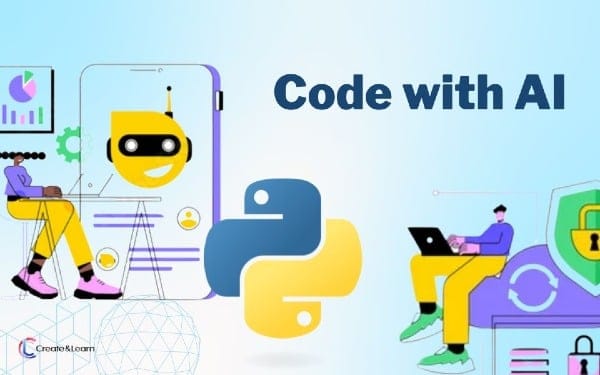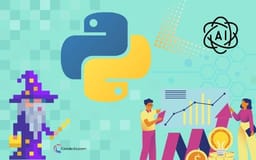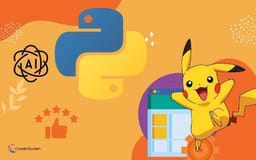$350$290.5017% Off(10 Sessions)Sign up two students to get additional 20% off for the 2nd student

Learning Hours
Projects Created
Countries
“Should today’s students still learn coding?”—you might be wondering, because of the rapid development of AI. The answer is an unequivocal YES! But the real question we should be asking is: What should learning coding look like for young learners today?
“Vibe Coding is the future,” according to Y Combinator, a leading venture capital firm, and many tech leaders. The idea of Vibe Coding—a term coined by top AI expert Andje Kacapsi—refers to a programming approach that uses AI tools to generate code based on natural language instructions, rather than manually writing all the code. It allows programmers to code 3x, 10x, or even 100x faster, depending on the use case.
This is the world our students will live in, and this is the kind of coding ability they need to develop. The good news? Working with AI to code effectively is not very difficult—but it does require students to learn how to do it. And the more coding knowledge students master, the more effectively they’ll be able to collaborate with AI.
In this innovative class, students will learn how to develop far more advanced projects, faster, by working alongside AI using Python. This skill not only sets a strong foundation for their long-term success in the real world, but is also valuable for school projects, science competitions, and even summer internships.
In particular, students will
Develop problem-solving skills by leveraging AI - Learn how to break down complex problems into manageable steps and how to develop and use test cases.
Gain more fluency in writing Python code - Know when and how to use various data structures as well as construct and organize more complex functions.
Learn how to code collaboratively with AI - Find the right balance between learning and building quickly. Solve problems faster and more effectively with AI assistance, and learn along the way.
Get introduction to computer algorithms - Explore selected popular algorithms and develop intuition for choosing the right algorithm for a task.
Apply coding with AI skills to solve a variety of real-world problems.
Students should have completed our Python for AI class or equivalent before taking this course.

The first unit introduces students to the foundational techniques for working with AI effectively to code, such as what learners should do and what we have AI do, how to learn in the process, and how to approach complex projects. We will also develop several fun projects while learning and apply these techniques to create pixel and ASCII art, analyze business data, and build the WebGrid game used by Neuralink. Along the way, they’ll also explore key computer science concepts such as sorting algorithms, string search techniques, and image manipulation.

Unit 2 focuses on leveraging AI to develop more complex algorithms and projects. We will build a web scraping project and use the ChatGPT API to analyze a Pokémon website, which is both fun and engaging. Students will also learn algorithms and develop a YouTube recommendation system that can dynamically call the YouTube API to find the most relevant videos.
Through building these popular applications, students will not only gain system-level insights for developing real-world solutions, but also understand the underlying architecture and learn how to apply these techniques to a broad range of problem-solving scenarios.
Student must have completed Python for AI courses or equivalent before taking this class.
Designed by Stanford, Google & Apple Experts with kids in mind.
We'll help you find the right class, always. Love it or get a full refund.
US-based, background checked, highly trained and 3+ years of experience in their fields.
Show the world you did it. You really did it!
'Vibe Coding' is a new way of programming where coders use AI to write code much faster. Instead of typing every single line, programmers learn how to tell the AI what they want to build using natural language, and the AI helps generate the code. It's like having a super smart coding assistant. However, students need to know the foundations of coding and learn specifically how to code with AI to be able to do Vibe Coding. This is what this class is about..
Children who are comfortable with basic programming concepts and have some experience with Python or another coding language can start exploring advanced Python topics. Typically, this might be around middle school or early high school, but it really depends on your child's interest and readiness.
Advanced Python skills complement many school subjects, especially math, science, and technology courses. It equips your child with critical thinking and problem-solving skills that are valuable in higher education and future careers in STEM fields. Being proficient in Python gives them a big advantage in college applications and internships.
Create & Learn focuses on project-based learning, where students build practical applications like games, data analysis tools, or automation scripts. This hands-on approach ensures students can apply what they learn immediately to real-world scenarios, setting Create & Learn apart from programs that rely mostly on theory or abstract exercises.
In an Advanced Python class, students work on real-world projects and challenges that simulate actual coding problems. Teachers can offer personalized help, explain complex concepts in simpler terms, and encourage creative thinking, which results in stronger problem-solving skills compared to learning alone from videos or games.
Create & Learn uses small class sizes, live instructor support, and a curriculum designed specifically for kids. Their lessons combine interactive coding activities with fun projects, peer collaboration, and real-time feedback, creating an engaging and supportive environment that helps kids learn advanced Python effectively and enjoyably.
When deciding between these three classes, here are a few factors to consider:
Advanced Python:
Python for AI:
Python Data:
Decision Tips:
Ultimately, the decision should consider your child's current interests and future goals in the realm of coding and technology.
This class is perfect for students in grades 6-12 who have already built a solid foundation on Python coding. Specifically, they should have completed our Python for AI courses or have equivalent experience. This ensures that students are ready to jump into these exciting advanced topics and work alongside AI.
Great question. With AI rapidly evolving, it's actually more important than ever for kids to learn coding. Think of AI as a super-powered tool; learning to code teaches them how to effectively use these tools, problem-solve, and build their own amazing things. This class specifically teaches them how to work with AI to make powerful projects more quickly.